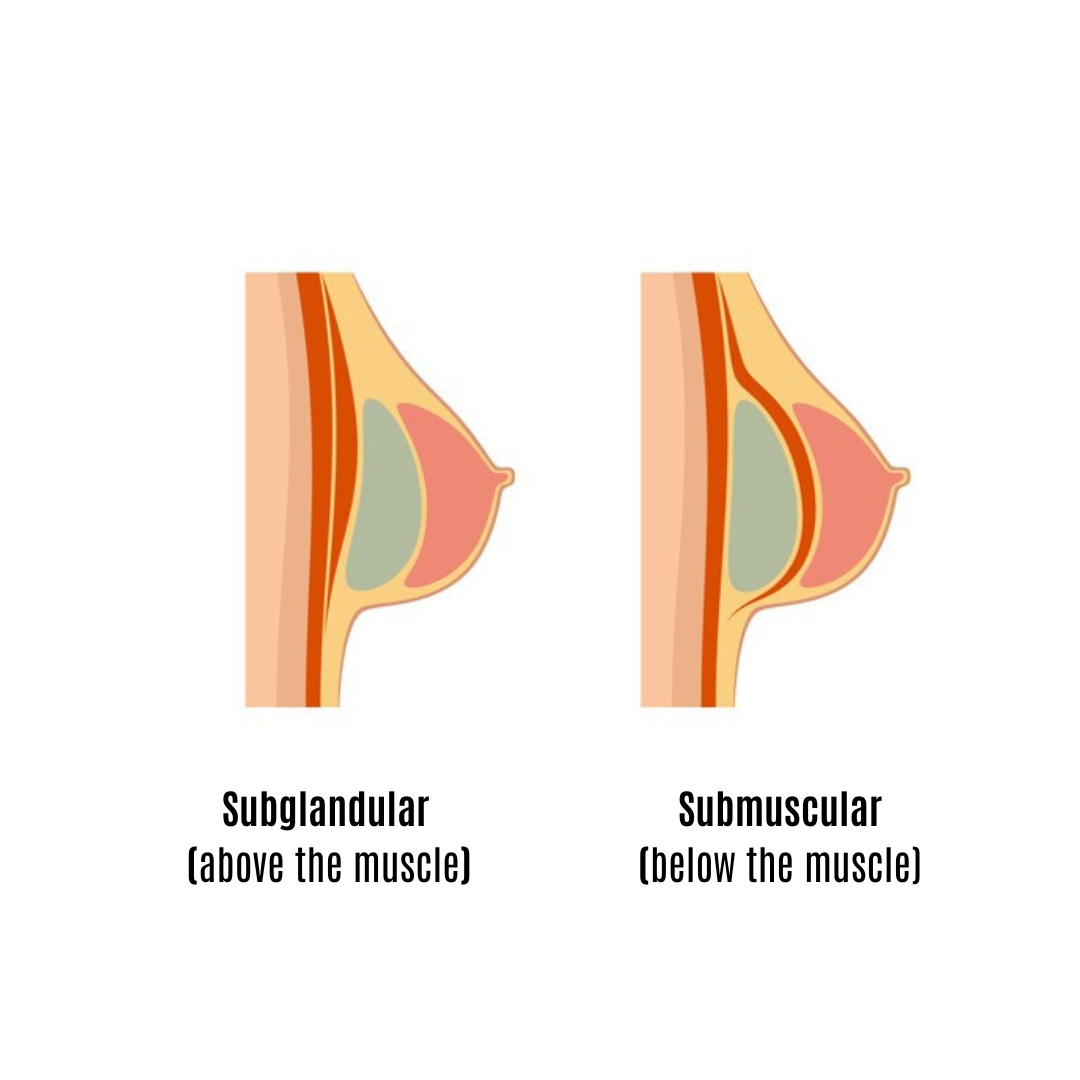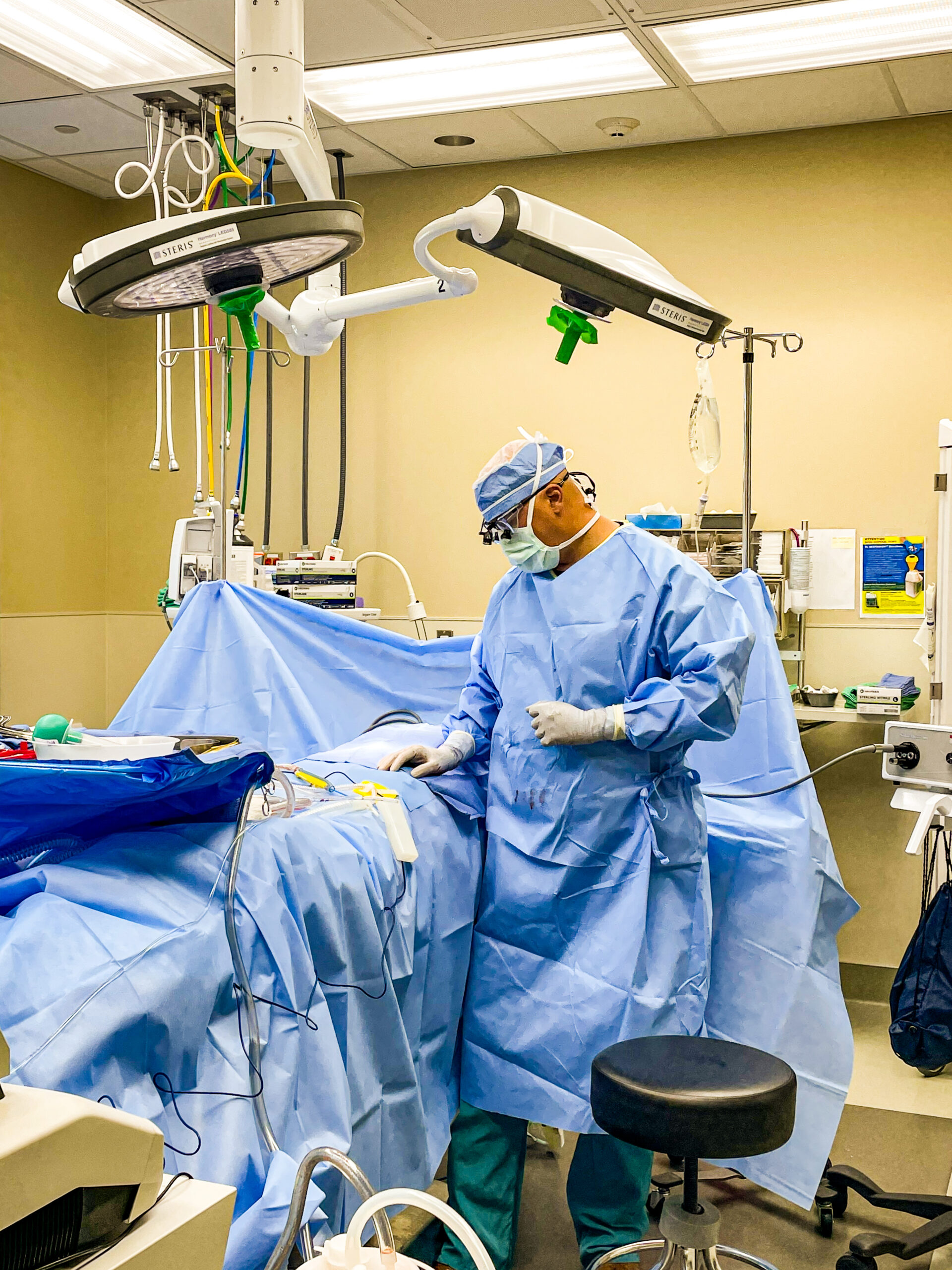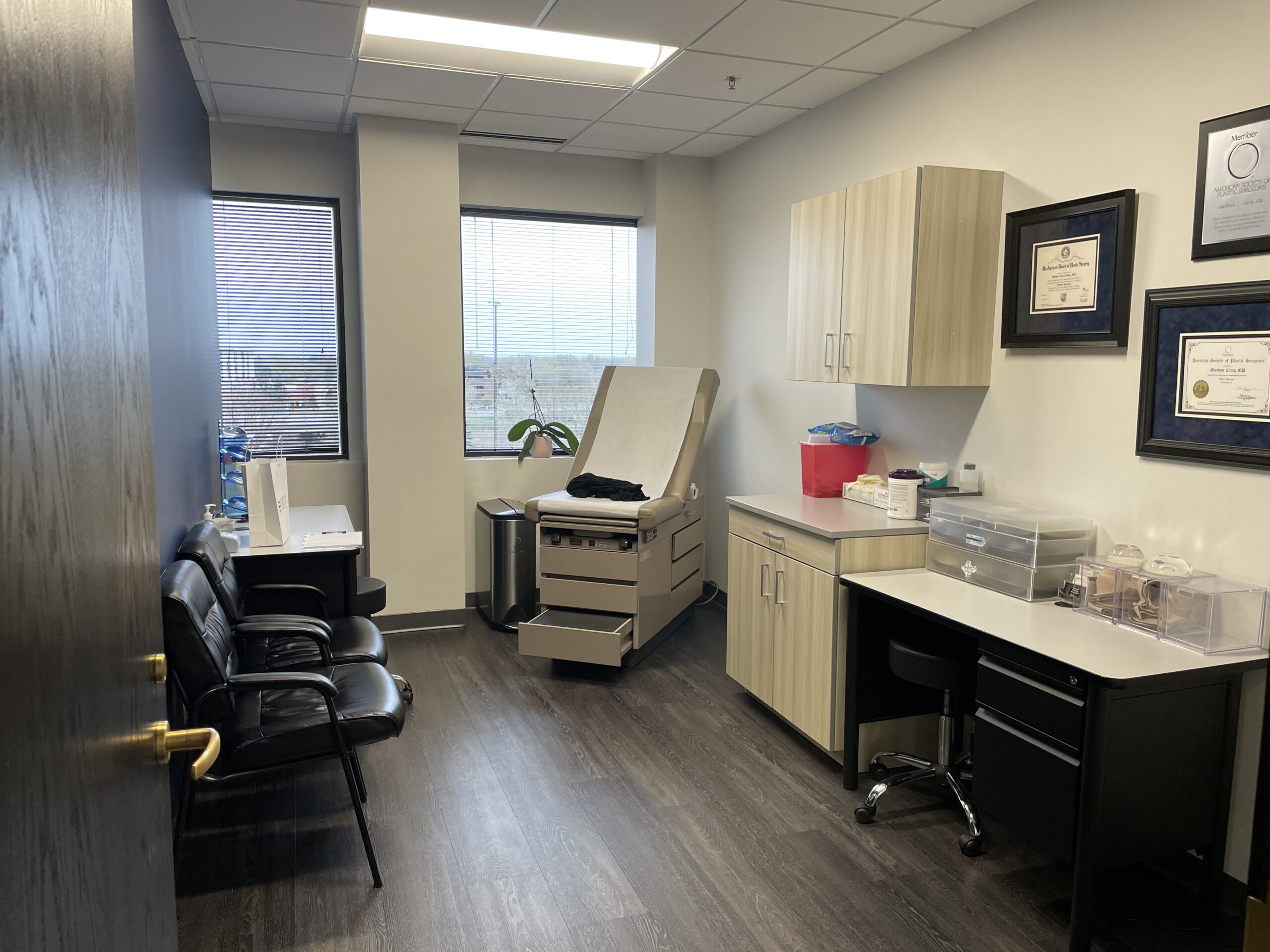
Matthew C Camp, MD
Board Certified Plastic Surgeon
Inverted nipples are frequently encountered in our clinic during breast surgery. Many people are unaware that this condition can be easily treated, often at the same time as the main breast surgery.
What is an Inverted Nipple? An inverted nipple occurs when the nipple, instead of pointing outward, retracts inward
into the breast. This condition can be present from birth (congenital) or develop later in
life (acquired). Common causes include:
Treatment Options:
If the nipples do not respond to non-surgical approaches, such as nipple stimulation (gentle pulling and massage) and protection with breast shields, a minor surgery can correct the problem.
Surgical Treatment:
This procedure can be performed with the patient awake or under anesthesia. A numbing medicine is injected with a very fine needle, and a small incision is made under the nipple to release the adherent scar tissue and lactiferous ducts. A temporary barbell
piercing is placed to keep the nipple everted; this can be removed after a couple of weeks. This modern technique is superior to older methods, which required more extensive dissection of the nipple and the use of a suture attached to a tent dressing. The older dressing method was irritating and poorly tolerated. The current technique is comparable to getting a piercing in terms of discomfort. Recovery is straightforward, and the results are permanent.
In summary, inverted nipples can be effectively treated with minimal discomfort and lasting results, often during the same session as other breast surgeries. Come into our clinic to see what we can do for you! Consultations are no charge.

Matthew C Camp, MD
Board Certified Plastic Surgeon
Elective cosmetic surgery is a significant decision that involves not only the procedure itself but also pre- and post-operative care. While the allure of cut-rate prices and flashy advertising can be tempting, especially from out-of-state or international providers, there are compelling reasons to seek care from a local surgeon. The potential complications associated with traveling for surgery, such as bleeding, deep vein thrombosis (DVT), and post-operative infections, underscore the prudence of choosing a local, board-certified surgeon.
Complications During Travel
Traveling for surgery introduces several risks that are often overlooked in the quest for savings. Air travel, in particular, can exacerbate certain medical conditions. Long flights increase the risk of DVT, a condition where blood clots form in the deep veins of the legs. These clots can travel to the lungs, causing a potentially fatal pulmonary embolism. The risk is heightened when combined with the immobility and stress of recent surgery. Additionally, air pressure changes during flights can contribute to bleeding and other complications in surgical patients.
Lack of Follow-Up Care
One of the most critical aspects of surgical care is the ability to have follow-up appointments with the original surgeon. Follow-up care ensures that any complications, such as infections or wound issues, can be promptly addressed by the person most familiar with the case. When patients travel out of state or out of the country for surgery, they lose the opportunity for seamless follow-up care. Should complications arise, local healthcare providers may lack detailed knowledge of the surgical techniques and materials used, potentially leading to suboptimal management of post-operative issues.
Increased Risk of Infection
Surgery in foreign countries can significantly increase the risk of infection. While many international clinics maintain high standards, the variability in healthcare regulations and practices can lead to discrepancies in infection control. Post-operative infections can be challenging to manage and require prompt and precise treatment. The difficulty of coordinating care between foreign providers and local healthcare professionals complicates the treatment process, often resulting in delayed interventions and prolonged recovery times.
Quality and Safety Standards
Local surgeons are subject to stringent regulatory standards and continuous professional oversight. Board certified plastic surgeons in the United States, for example, must adhere to rigorous training requirements, ethical guidelines, and continuing education. These standards ensure a high level of competency and patient safety. In contrast, the qualifications and oversight of surgeons in other countries can vary widely, potentially compromising the quality of care.
Economic Considerations
While the initial cost of surgery may appear lower in other states or countries, hidden costs can quickly accumulate. Travel expenses, accommodation, and potential lost wages from extended recovery periods away from home add to the overall cost. Moreover, the financial burden of managing complications or revisions, which are more likely without proper follow-up care, can surpass any initial savings. Investing in a local surgeon, despite the higher upfront cost, often proves more economical in the long run.
Patient Support Systems
Undergoing surgery is a significant emotional and physical undertaking. Having the support of family and friends close by during recovery can have a substantial positive impact on the healing process. Local surgery ensures that patients can recover in familiar surroundings with their support network readily available. This support is crucial for emotional well-being and can aid in a smoother, faster recovery.
Conclusion
While the prospect of traveling for elective cosmetic surgery might seem appealing due to lower costs and enticing advertisements, the potential risks and complications make it a less prudent choice. Choosing a local surgeon ensures better continuity of care, adherence to high safety standards, and immediate access to follow-up appointments. The peace of mind that comes with knowing that your surgeon is nearby, coupled with the support of loved ones, far outweighs the initial savings. In the realm of elective cosmetic surgery, prioritizing quality, safety, and comprehensive care is essential, and staying local is a key part of that prudent approach.

Matthew C Camp, MD
Board Certified Plastic Surgeon
When considering options for addressing excess abdominal skin, it’s essential to evaluate the individual’s specific needs and goals. While a tummy tuck (abdominoplasty) can be highly effective for targeting the front of the abdomen, it may not address all of the concerns for certain patients, particularly those who have experienced significant weight loss or have excess skin in multiple areas of the body.
For individuals who have undergone substantial weight loss, whether through bariatric surgery or other means, a circumferential body lift may be a more comprehensive solution. Unlike a tummy tuck, which primarily targets the abdomen, a circumferential body lift addresses excess skin not only on the abdomen but also on the back, hips, and buttocks. This procedure involves removing excess skin and tissue circumferentially around the waistline, resulting in a smoother and more contoured appearance throughout the midsection.
Additionally, a circumferential body lift can include a lateral thigh lift, which helps address sagging skin on the outer thighs, further enhancing the overall contour of the lower body. By addressing multiple areas of concern in a single surgery, patients can achieve more comprehensive and aesthetically pleasing results.
Furthermore, patients who have lost a significant amount of weight often have excess skin in other areas of the body, such as the arms, breasts, and inner thighs. In these cases, additional procedures, such as arm lift (brachioplasty), breast lift (mastopexy), or thigh lift (medial thighplasty), may be necessary to tailor the skin to their new body shape fully.
Ultimately, the choice between a tummy tuck and a circumferential body lift depends on the extent of excess skin and the patient’s overall body contouring goals. Consulting with a board-certified plastic surgeon who specializes in body contouring procedures can help individuals determine the most appropriate treatment plan to achieve their desired results.

Matthew C Camp, MD
Board Certified Plastic Surgeon
Breast augmentation, the surgical procedure aimed at enhancing the size and shape of the breasts, has a long and storied history dating back centuries. Throughout the centuries, various methods and materials have been used in attempts to achieve desired results, leading to a fascinating evolution of breast augmentation techniques.
1. Lipoma Injections:
One of the earliest documented methods of breast augmentation dates back to the late 19th century when physicians experimented with injecting substances such as lipoma (a benign fatty tumor) into the breasts to increase their size. While these injections could temporarily increase breast volume, they often resulted in complications such as infection, migration of the injected material, and the formation of hard lumps.
2. Paraffin Injections:
In the early 20th century, paraffin injections gained popularity as a method of breast augmentation. Paraffin, a mineral oil derivative, was injected directly into the breast tissue to augment size. However, this technique was fraught with complications, including inflammation, infection, and the formation of granulomas. Long-term complications such as migration of paraffin to other parts of the body and the development of cancer were also reported, leading to the abandonment of paraffin injections for breast augmentation.
3. Silicone Gel Implants:
The modern era of breast augmentation began in the 1960s with the introduction of silicone breast implants. These implants consisted of a silicone shell filled with silicone gel. Silicone implants quickly gained popularity due to their natural look and feel compared to previous methods. However, concerns arose regarding the safety of silicone implants, particularly regarding the risk of rupture and the potential for silicone leakage into surrounding tissue. In the 1990s, silicone implants were temporarily banned in the United States while further studies were conducted to assess their safety. After extensive research, silicone implants were reintroduced to the market in the early 2000s, with improved designs and safety profiles.
4. Saline Implants:
As an alternative to silicone implants, saline implants emerged as a popular option in the 1980s. Saline implants consist of a silicone shell filled with sterile saline solution. One advantage of saline implants is that in the event of rupture, the saline is harmlessly absorbed by the body. However, saline implants are often criticized for their less natural feel compared to silicone implants. When saline implants rupture, the effect can be referred to as a “flat tire” because the some of the breast volume has been lost.
5. Solid Silicone “Gummy Bear” Implants:
Today’s solid smooth silicone “gummy bear” implants have a proven record of safety and deliver natural feeling and predictable results. At my practice, we provide all of our patients consulting for breast implant procedures with a folder full of information about both the benefits and long-term possible implications of today’s silicone implants.
Throughout its history, breast augmentation has undergone significant advancements in techniques and materials, leading to safer and more effective procedures. Today, silicone and saline implants are the most commonly used methods for breast augmentation. However, ongoing research and innovation continue to drive improvements in breast augmentation techniques, ensuring that patients have access to the latest advancements in aesthetic surgery.

Matthew C Camp, MD
Board Certified Plastic Surgeon
Breast augmentation is not just about increasing size; it’s also about enhancing shape. Many patients come to clinics with a vision of the ideal post-surgery look, often inspired by images of models with full cleavage and pert breasts. However, achieving this desired look goes beyond simply choosing a large implant – it requires proper support, and bras matter more than you might think.
Large breast implants may initially give the appearance of fullness, but over time, gravity takes its toll. Implants can sink, causing the upper pole to deflate while filling the lower pole of the breast. To maintain a youthful and perky appearance, it’s essential to choose a moderate-sized implant and complement it with the support of a well-fitted bra or bikini top.
In our clinic, we often encounter patients who are dissatisfied because their results don’t match their “look book” models. However, by demonstrating the transformative power of proper support with the right bra, we can show them that they can achieve the desired cleavage and shape.
Moreover, bras play a crucial role in preserving the long-term aesthetic results of breast augmentation. Some patients mistakenly believe that augmented breasts require no support. However, the weight of implants, which can be substantial, necessitates even more support to maintain the desired shape and prevent sagging over time.
Consider this: a 250cc implant weighs about 0.55 pounds. That might not sound like much, but over time, the cumulative effect of gravity can cause implants to shift and lose their youthful appearance. This is where a supportive bra becomes indispensable. By providing additional support, bras help to distribute the weight of the implants evenly, reducing strain on the surrounding tissue and ensuring a more sustainable and aesthetically pleasing outcome.
In essence, the relationship between bras and breast implants is symbiotic. While implants provide a foundation for enhanced size and shape, supportive bras play a crucial role in maintaining the desired appearance over time. So, when considering breast augmentation, remember that bras are not just accessories – they are essential partners in achieving and preserving the look you desire.

Matthew C Camp, MD
Board Certified Plastic Surgeon
Building a successful plastic surgery practice requires more than just surgical skill. It demands a strategic blend of persistence, diligence, contentiousness, teamwork, resilience, staff selection, and goal selection for sustainable growth. In my view, this is how each of these elements contributes to the success of a plastic surgery practice.
Persistence:
Persistence is the bedrock of any successful endeavor. In plastic surgery, persistence entails continually striving for excellence, even in the face of challenges or setbacks. It means dedicating oneself to continuous learning, refining techniques, and adapting to evolving patient needs and industry trends. Persistent surgeons are committed to achieving optimal outcomes for their patients and are willing to invest the time and effort necessary to excel in their field.
Diligence:
Diligence goes hand in hand with persistence, encompassing thoroughness, attention to detail, and a strong work ethic. Diligent plastic surgeons approach each procedure with care and precision, ensuring the highest standards of safety and quality. They meticulously plan and execute surgeries, minimizing risks and maximizing results. Diligence also extends to post-operative care, where surgeons monitor patients closely to ensure optimal healing and satisfaction.
Contentiousness:
Contentiousness refers to the ability to engage in healthy debate and critical thinking, both within the practice and with colleagues in the broader medical community. In plastic surgery, contentiousness fosters innovation and continuous improvement. Surgeons who are willing to question existing practices, explore new techniques, and collaborate with peers are better positioned to deliver cutting-edge care and stay ahead in a competitive field.
Teamwork:
Teamwork is essential for delivering comprehensive care and optimizing patient outcomes. A successful plastic surgery practice relies on a multidisciplinary team of skilled professionals, including surgeons, nurses, anesthesiologists, and administrative staff. Effective teamwork involves clear communication, mutual respect, and collaboration towards common goals. By harnessing the collective expertise and talents of its team members, a practice can provide holistic care that addresses the diverse needs of its patients.
Resilience:
Resilience is the ability to bounce back from adversity and overcome challenges with grace and determination. In the dynamic and high-pressure environment of plastic surgery, resilience is indispensable. Surgeons must be prepared to navigate complications, manage patient expectations, and handle professional stressors with resilience and fortitude. By cultivating resilience, plastic surgeons can weather the inevitable ups and downs of their career while maintaining their commitment to
excellence and patient care.
Staff Selection:
The success of a plastic surgery practice hinges on the quality of its staff. Selecting the right team members who share the practice’s values, work ethic, and commitment to excellence is paramount. From administrative staff who provide seamless patient experiences to surgical assistants who support surgeons in the operating room, every member of the team plays a critical role in the practice’s success. By recruiting and retaining top talent, a practice can deliver exceptional care and build a reputation for excellence in the community.
Selection of Goals for Growth:
Setting strategic goals is essential for driving growth and success in a plastic surgery practice. Whether expanding service offerings, enhancing patient satisfaction, or increasing market share, clear and achievable goals provide direction and motivation for the practice. By selecting goals that align with its mission and vision, a practice can focus its efforts, measure progress, and continuously strive for improvement. Additionally, setting goals fosters a culture of accountability and innovation, empowering
team members to contribute to the practice’s success.
In conclusion, building a thriving plastic surgery practice requires a multifaceted approach that encompasses persistence, diligence, contentiousness, teamwork, resilience, staff selection, and selection of goals for growth. By cultivating these essential elements, plastic surgeons can deliver exceptional care, achieve professional success, and make meaningful contributions to the field of aesthetic medicine.

Matthew C Camp, MD
Board Certified Plastic Surgeon
In breast augmentation, the choice between subglandular and submuscular (under the muscle, also known as subpectoral) implant placement is crucial for achieving natural-looking results. While both options offer similar static appearances, the dynamics differ significantly, especially when the pectoral muscle (main chest muscle) is active. When this muscle activates, it causes the breast to move down and out.
For most of my breast augmentation patients, I recommend subglandular implant placement. Not often, there will be patients who either have extremely small breasts or have very little breast tissue due to massive weight loss and in such a situation where there is virtually no breast tissue, implants must be placed underneath the muscle. Additionally, some patients specifically request submuscular placement and I am happy to accommodate such a request and make sure the patient is informed what can be expected after surgery regarding longer recovery and breast animation considerations.
Submuscular implants tend to move when the pectoral muscles are flexed, which can causes an unnatural animation of the implant that can be seen by others. This can be obvious when wearing a swim suit, attending yoga class, or when lifting weights. On the other hand, subglandular implants behave more like natural breasts, providing a seamless aesthetic, particularly during muscle movement.
The historical context of implant technology also plays a role. Early silicone and saline implants had issues like rippling, leading to a preference for subpectoral placement to mask these imperfections. However, modern solid silicone implants have reduced the risk of rippling, making subglandular placement more viable for achieving a natural appearance without having to cut the muscle.
Advantages of subglandular placement include enhanced cleavage, easier recovery with less pain, and preservation of muscle integrity. Some surgeons, however, may default to submuscular placement due to familiarity or outdated practices. Yet, with modern implants, there are more options available for achieving optimal results with a subglandular placement.
In summary, while submuscular placement may still be necessary for certain cases, such as patients with minimal breast tissue, subglandular augmentation offers aesthetically pleasing outcomes for most individuals. Understanding the nuances of implant plane selection is essential for informed decision-making in breast augmentation procedures. During your consult in our practice, we will customize your surgical plan to help you achieve your aesthetic goal.

Matthew C Camp, MD
Board Certified Plastic Surgeon
In the competitive world of plastic surgery, gaining acceptance to a training program is no easy feat. While test scores and honors memberships are often used as metrics, they don’t paint the full picture of what makes a good surgeon.
Studies in psychology and surgery reveal that personality traits play a crucial role in surgical success. Traits like conscientiousness, diligence, agreeableness, kindness, and emotional stability are just as important as intellectual prowess. A good surgeon is
detail-oriented, patient-focused, communicative, and unflappable under pressure.
Surgery isn’t always perfect, so you need a surgeon with a steady hand and a reassuring demeanor. The before and after experience matters too. A great surgeon takes the time to listen, explain, and provide comfort during every step of your journey.
During your consultation, pay attention to how the surgeon interacts with you. Do they listen attentively? Are they genuinely friendly and low-pressure? A good surgeon will never rush you into elective surgery or push unnecessary services.
When choosing a surgeon, trust your instincts. Take your time to meet different surgeons and find the one who makes you feel confident and cared for. Remember, the right surgeon can make all the difference in your surgical experience and outcome.

Matthew C Camp, MD
Board Certified Plastic Surgeon
At Echelon Surgical Specialists, we offer transparent pricing for our procedures. Our quoted rate remains unchanged for 3 months, ensuring clarity and peace of mind. Our prices include the surgeon’s fee, anesthesia fee (our patients are under the care of a board certified anesthesiologist in the interest of surgical safety), the facility charge (we only operate at accredited ambulatory surgery centers), the procedure itself, supplies and materials such as breast implants and Keller funnel for breast augmentation or Exparel for tummy tucks, and your post op followup visits with us in the clinic.
We are also very up-front on our estimate sheets about what is not included. Patients are responsible for the cost of medications to pickup prior to surgery at your pharmacy, any preop clearance or imaging visits with providers outside of Echelon Surgical Specialists, any additional after care encounters at outside facilities such as optional post-lymphatic massage services or urgent care visits. Additionally, some breast reduction procedures may involve outside pathology charges. Any future surgical procedures are considered separate charges and are not included in the price for the initial procedure.
From the moment you step into our clinic, costs begin accruing to cover support staff and facility expenses. The duration of surgery directly impacts the facility charge, with the first hour being the most expensive. Anesthesia and implants, such as breast
implants, are additional costs, along with premium items like Exparel.
Some clinics break down costs, and require the patient to make separate payments for the surgeon’s fee, the facility fee, and the anesthesia fee, but this can create an illusion of lower prices, as secondary charges like facility and anesthesia may fluctuate based on actual usage. At Echelon Surgical Specialists, we don’t like surprises, so if your surgery runs 30 minutes longer than we anticipated, you will not receive a separate bill for an additional anesthesia charge.
Our commitment to transparency means you can focus on your journey towards a wonderful result, with no hidden fees. Remember, consultations are free, and you only incur charges when you decide to proceed with surgery.

Matthew C Camp, MD
Board Certified Plastic Surgeon
We offer custom, complimentary consultations. Each patient is treated as an unique individual at Echelon Surgical Specialists.
Every patient that comes to our clinic has a variety of objectives for body improvement. The last thing we want you to worry about is feeling uncomfortable talking about personal issues. We understand that visiting a plastic surgeon can be a nerve-wracking experience for many people. That’s why we strive to create a warm and inviting atmosphere at our clinic, where you can feel comfortable and at ease from the moment you walk through the door.
Upon your arrival, you’ll be greeted by our friendly staff and offered a refreshing beverage to enjoy as you provide your clinical information. You will receive a folder with information about the procedure you are interested including before and after photos and aftercare instructions. Once your intake is complete, I will take the time to review your medical history to familiarize myself with your unique needs and concerns.
When you meet with one another, you’ll have the opportunity to discuss your goals and desires openly. Our goal is to listen carefully to your wishes and provide you with personalized recommendations tailored to your individual needs.
After our conversation, you’ll have the chance to relax in a spa robe while an exam is performed, with a female chaperone present for your comfort and peace of mind. For procedures like breast augmentation, we offer a sizing system using a bra and silicone spacers, allowing you to visualize your potential outcome and choose the size that’s right for you.
For body contouring and breast lifts, we’ll make marks on your skin so you can envision the potential scars and future shape. Throughout the consultation process, there’s never any sales pressure, and you’re encouraged to ask as many questions as you’d like.
Before you leave, we’ll provide you with an information package and exact price quote followed later by a custom letter from me outlining the surgical plan discussed during your visit. We understand that making a decision about elective surgery is a big step, so we encourage you to take your time and explore your options.
We offer no-cost consultations because we believe everyone should have the opportunity to learn about what’s possible. If you’re not a good candidate for surgery at the time of your visit, we’ll work with you to develop a plan to optimize your health and well-being before moving forward or make a recommendation of another path to take on your journey.
At our clinic, we believe in transparency and honesty. Our flat fees cover all expenses, except for post-surgery medications, so you can have peace of mind knowing there won’t be any hidden costs or surprises. Our pricelist is published on our website and you will also receive a copy in your informational folder.
Don’t let anything discourage you from coming in for a complimentary visit. We’re here to support you every step of the way, and we look forward to helping you achieve your aesthetic goals.
You can book a complimentary consultation by filling out the form on our website or by calling or sending a text message to 612-424-2767.